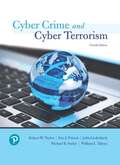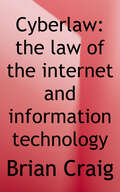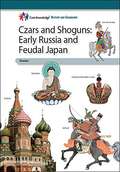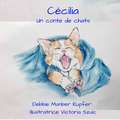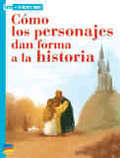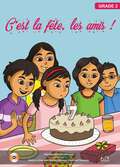- Table View
- List View
Cyber Crime and Cyber Terrorism
by Michael Saylor Robert Taylor John Liederbach Eric Fritsch William TafoyaThis book is a comprehensive introduction to the acts and theories of cyber crime, cyber terrorism, and information warfare. Assuming no prior knowledge of technology, the authors cover the types of crimes and terrorist acts committed using computer technology, theories addressing hackers and other digital criminals, and investigative, research, and legal strategies targeting these acts. Like no other on the market, the text bridges the gap between criminal justice knowledge and the technical issues that arise during investigations of cyber crime. The 4th edition adds material on new technologies and trends, plus updated review questions and activities.
Cyberlaw: The Law of the Internet and Information Technology
by Brian CraigFeaturing the most current exploration of cyberlaw, this book helps students understand the legal and policy issues associated with the Internet. Tackling a full range of legal topics, it includes discussion of jurisdiction, intellectual property, contracts, taxation, torts, computer crimes, online speech, defamation and privacy. <p><p>Chapters include recent, relevant cases, discussion questions and exercises at the end of each chapter. Using a consistent voice and clear explanations, the author covers the latest developments in cyberlaw-from cases to legislation to regulations.
Cyborgs: Pushing Nature's Boundaries (Fountas & Pinnell Classroom, Guided Reading)
by Amanda YskampNIMAC-sourced textbook. Man or Machine—or Both. Scientists and engineers are working together to invent sophisticated cyborgs—modified life forms made by combining natural organisms with hi-tech machines. These special plants, animals, and humans have enhanced abilities that may benefit society. But they also challenge our ideas about nature. Only time will tell how we interact with cyborgs and how they change the way we live.
Czars and Shoguns: Early Russia and Feudal Japan (Core Knowledge History and Geography)
by Core Knowledge FoundationFrom the CORE KNOWLEDGE FOUNDATION, which brought you the popular "What Your ___ Grader Needs to Know" series. CZARS AND SHOGUNS: EARLY RUSSIA AND FEUDAL JAPAN is a single volume divided into two separate sections on (1) Early Russia, and (2) Feudal Japan. The first section tells the story of how Russia grew to a large country ruled by powerful czars, including Ivan III (the Great), Ivan IV (the Terrible), Peter the Great, and Catherine the Great. The second section explores Japan's geography as an island nation and traces the rise of powerful feudal leaders called shoguns, and the role of the soldier-nobles called samurai. Chapters explore how Japan remained closed to most outsiders until European powers compelled the Japanese to open their doors for trade. The book also introduces two important religions in Japanese history, Buddhism and Shinto. Paperback. 102 pages. ** Part of the CORE KNOWLEDGE HISTORY AND GEOGRAPHYTM (CKHG) series in world and American history and geography, integrating topics in civics and the arts. CKHG books offer engagingly written text with many color illustrations, maps, vocabulary sidebars, and a glossary. Related materials (Teacher Guides and Timeline Cards) are also published by the Core Knowledge Foundation. In general, CKHG books are appropriate for young readers from the upper elementary grades through middle school.
Cécilia - Un conte de chats
by Debbie Manber Kupfer Elisabeth SelmanCécilia part en mission pour trouver un nouvel humain, mais va-t-elle trouver le bon? On lui a dit qu’ils étaient difficile à adopter. Par l’auteur de P.A.W.S. et d’Esméralda et la Tulipe Rouge. Une histoire idéale pour tous ceux qui adorent les chats. Les enfants aimeront découvrir les aventures de Cécilia, qui quitte la maison de sa maman pour trouver son propre humain à adopter. Les belles illustrations apportent un joli souffle de vie à cette charmante histoire . Une histoire courte à lire ou raconter à l’heure du coucher. Histoire que les enfants pourront lire seuls dès l’âge de 7/8 ans.
César Chávez: El amigo de los campesinos (¡Arriba la Lectura!, Level N #41)
by Maria FlemingNIMAC-sourced textbook. César Chávez ayudó a los campesinos a luchar por mejores salarios y un mejor trato por parte de los propietarios de las granjas. Lee la historia de César para aprender cómo un hombre marcó la diferencia en la vida de tantas personas.
César Chávez: Fighting for Farm Workers [Approaching Level, Grade 4]
by Judith LechnerNIMAC-sourced textbook
César Chávez: Fighting for Farm Workers [Beyond Level, Grade 4]
by Judith LechnerNIMAC-sourced textbook
César Chávez: Fighting for Farm Workers [On Level, Grade 4]
by Judith LechnerNIMAC-sourced textbook
César Chávez: The Farm Workers' Friend (Into Reading, Level Q)
by Maria FlemingNIMAC-sourced textbook. César Chávez helped farm workers fight for better pay and better treatment from the farm owners. Read César's story to learn how one man made a difference in so many people's lives.
Cómo funcionan las ilusiones ópticas (¡Arriba la Lectura!, Level U #46)
by Bruce NaylorNIMAC-sourced textbook
Cómo hacer una balsa pequeña (¡Arriba la Lectura! Level E #87)
by Lindsay Edwards Debbie CroftNIMAC-sourced textbook <p><p> ¡Hagamos una balsa pequeña! Es fácil y divertido. Este libro explica cómo hacerla.
Cómo los personajes dan forma a la historia: Textos Para La Lectura Atenta (Texts Close Reading )
by Benchmark Education Co., LLC StaffNIMAC-sourced textbook
Cómo montar una obra escolar (¡Arriba la Lectura!, Level L #47)
by Sally Cowan Rob ManciniNIMAC-sourced textbook. En mi salón de clases, mis compañeros y yo queríamos montar una obra llamada El tiburón solitario. Pero antes de poder presentársela al público, ¡había muchísimo que hacer!
Cómo nació el arcoíris (¡Arriba la Lectura!, Big Book Module 8)
by Alma Ada Vivi EscriváNIMAC-sourced textbook
Cómo osa perdió su cola: Un cuento del por qué de los nativos americanos (Text Connections Guided Close Reading Ser.)
by Alison Adams Jacqui DavisNIMAC-sourced textbook
Cómo se comunican los animales (¡Arriba la Lectura!, Level R #53)
by Annette SmithNIMAC-sourced textbook. ¿Sabías que los animales, al igual que los seres humanos, se comunican entre sí? Cuando los animales envían y reciben mensajes a través del olor, la vista, el sonido y el tacto, no solo se saludan: la comunicación es vital para su supervivencia.
Cómo se protegen los animales (¡Arriba la Lectura!, Level P #62)
by Pamela RushbyNIMAC-sourced textbook
Cómo vuelan los planeadores (¡Arriba la Lectura!, Level H #52)
by Heather HammondsNIMAC-sourced textbook. Descubre cómo se puede planear por el cielo ¡sin combustible, motor ni hélices!
C’est la fête, les amis! class 2 - MIE
by Kaviraj. S. PeedolyLe livre "C’est la fête, les amis!" rédigé par Kaviraj. S. Peedoly et illustré par William Rasoanaivo, est un récit captivant qui relate la joyeuse célébration de l'anniversaire d'Aaliya et de la Journée de l'Indépendance de l'île Maurice. L'histoire se déroule alors qu'Aaliya invite avec enthousiasme ses camarades de classe à se joindre à sa célébration, débutant par l'hymne national dans le jardin, en commémoration de l'indépendance du pays. Le récit capte l'excitation de couper le gâteau d'anniversaire, de recevoir des cadeaux et de savourer de délicieuses gourmandises. Conçu comme un livre géant interactif, les sessions sont structurées de manière réfléchie, encourageant les discussions pré-lecture sur les thèmes de l'indépendance et des anniversaires. Les sessions engageantes du livre permettent aux élèves d'explorer la compréhension linguistique à travers des discussions de groupe, de se remémorer des expériences personnelles liées aux thèmes, et de favoriser des activités créatives telles que le coloriage. À travers des illustrations vibrantes et une narration accessible, le livre vise à promouvoir la littératie et la compréhension culturelle parmi les jeunes apprenants à Maurice, offrant une plateforme interactive pour renforcer les compétences linguistiques tout en célébrant des événements précieux.
